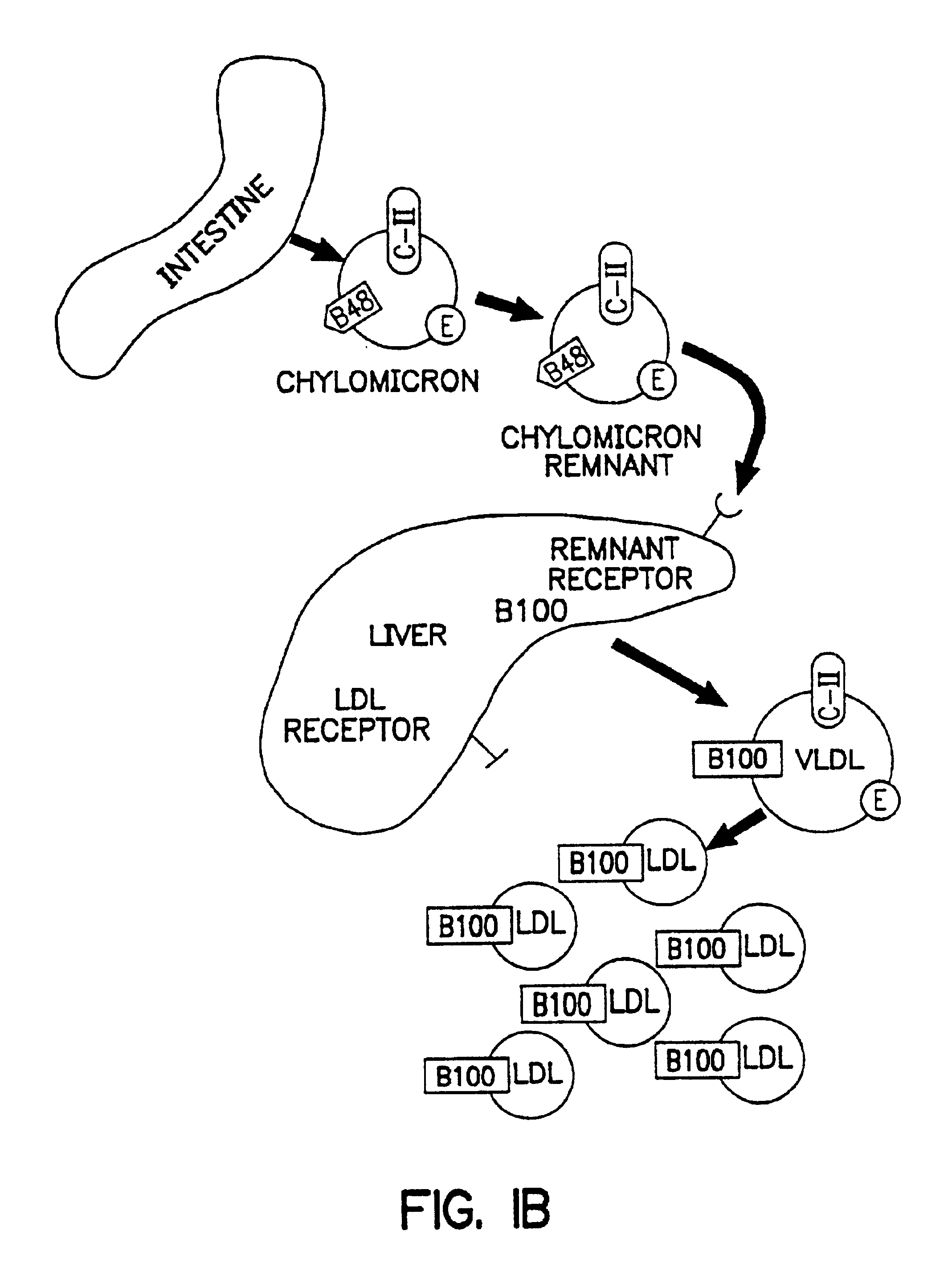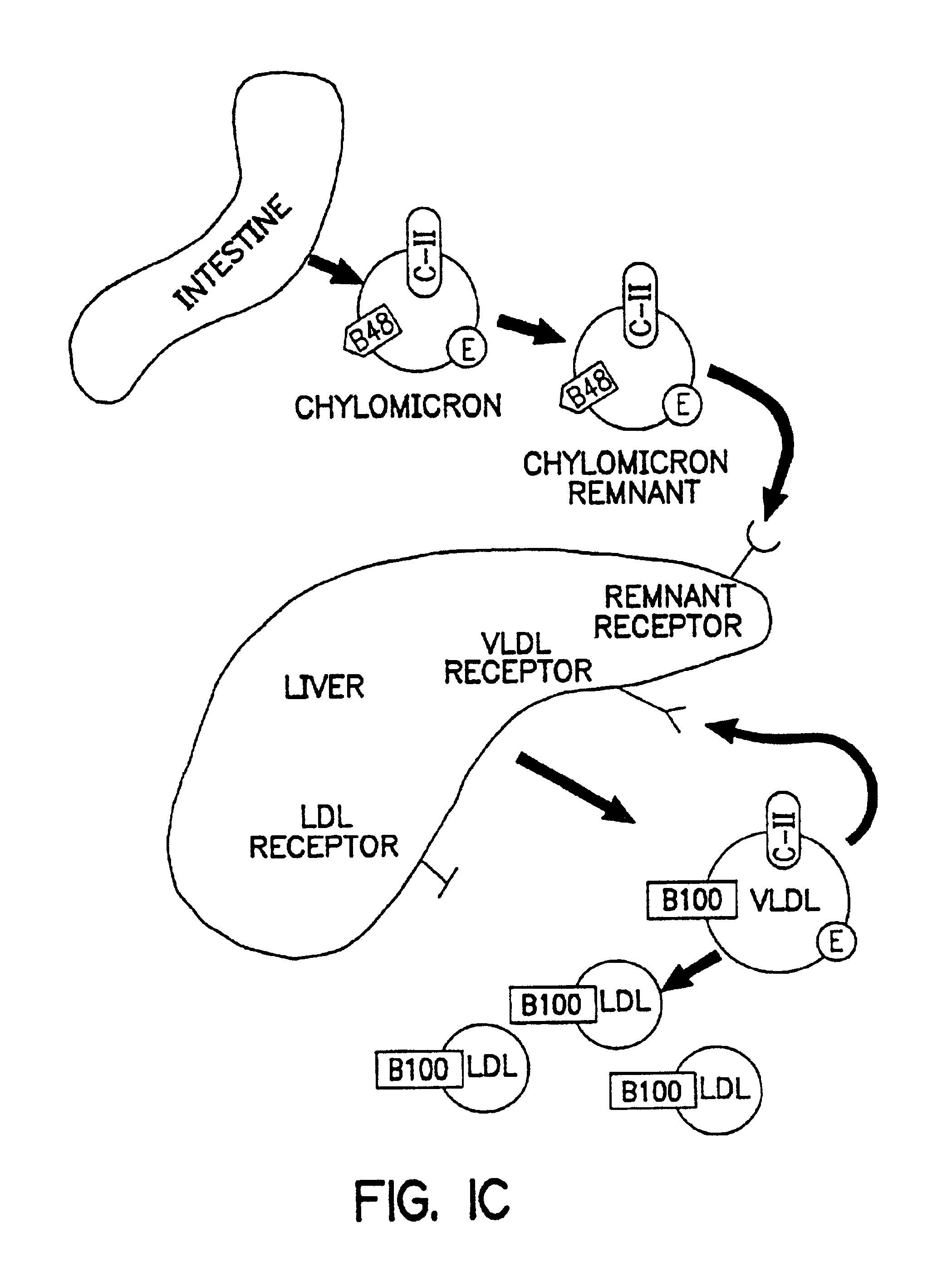Methods and compositions for the treatment of defects in lipoprotein metabolism
a technology of lipoprotein and metabolism defect, applied in the field of lipid metabolism, can solve the problems of severe hypertriglyceride, drug composition, and ineffective fch drugs, and achieve the effect of improving the metabolism rate and reducing the risk of fch
- Summary
- Abstract
- Description
- Claims
- Application Information
AI Technical Summary
Benefits of technology
Problems solved by technology
Method used
Image
Examples
example 1
Construction and Purification of H5.010CMVVLDLR
[0143]The cDNA for the human very low density lipoprotein (VLDL) receptor [M. E. Gafvels et al, cited above; SEQ ID NO: 1] was inserted into the polylinker region of plasmid pRc / CMV (obtained from Invitrogen Corp.). The resulting plasmid, pRc / CMVVLDLR, was digested with the restriction enzymes SnaBI and NotI and the 4 kb fragment containing the cytomegalovirus (CMV) immediate-early promoter and VLDL receptor cDNA was isolated.
[0144]The plasmid pAd.CMVlacZ (Kozarsky II, cited above] was digested with SnaBI and NotI to remove the CMV promoter and lacZ cDNA and the 5.6 kb backbone was isolated. The two fragments were ligated to generate pAd.CMVVLDLR (FIGS. 2 and 9; SEQ ID NO: 3). pAd.CMVVLDLR was linearized with NheI and co-transfected into 293 cells with sub360 DNA (derived from adenovirus type 5) which had been digested with XbaI and ClaI as previously described [K. F. Kozarsky I and II cited above].
[0145]The resulting recombinant adenov...
example 2
Other Recombinant Adenoviruses
[0148]H5.010CMVlacZ, encoding the lacZ gene under the control of the CMV enhancer / promoter, and H5.010CBhLDLR, encoding the human low density lipoprotein (LDL) receptor cDNA under the control of the CMV-enhanced chicken β-actin promoter, were prepared as previously described [K. F. Kozarsky I and II, cited above].
example 3
Effects of Hepatic Expression of the VLDL Receptor in the WHHL Rabbit
[0149]H5.010CMVVLDLR or H5.010CMVlacZ (encoding β-galactosidase), obtained as described in Examples 1 and 2, was infused intravenously into WHHL rabbits [Camm Research] as follows. Rabbits were infused with 7.5×1012 particles of either recombinant adenovirus through a marginal ear vein on day 0. In addition, two New Zealand White (NZW) rabbits [Hazleton, Inc.] were infused with each virus and sacrificed on day 5 post-infusion to document the extent of gene transfer in the liver.
[0150]Rabbits were maintained in a 12 hour light / dark cycle on a diet of Purina laboratory chow, delivered each day at approximately 11:00 am. Venous samples were obtained through a marginal ear vein at approximately 10:00 am on the days indicated.
[0151]A. Plasma Analyses
[0152]Plasma samples were analyzed for total cholesterol using the Cholesterol HP kit and Precise standards (Boehringer Mannheim). Briefly, FPLC analysis was performed on 50...
PUM
| Property | Measurement | Unit |
|---|---|---|
| Density | aaaaa | aaaaa |
| Level | aaaaa | aaaaa |
Abstract
Description
Claims
Application Information
 Login to View More
Login to View More - R&D
- Intellectual Property
- Life Sciences
- Materials
- Tech Scout
- Unparalleled Data Quality
- Higher Quality Content
- 60% Fewer Hallucinations
Browse by: Latest US Patents, China's latest patents, Technical Efficacy Thesaurus, Application Domain, Technology Topic, Popular Technical Reports.
© 2025 PatSnap. All rights reserved.Legal|Privacy policy|Modern Slavery Act Transparency Statement|Sitemap|About US| Contact US: help@patsnap.com



